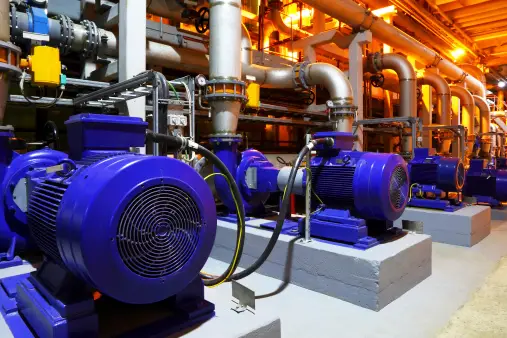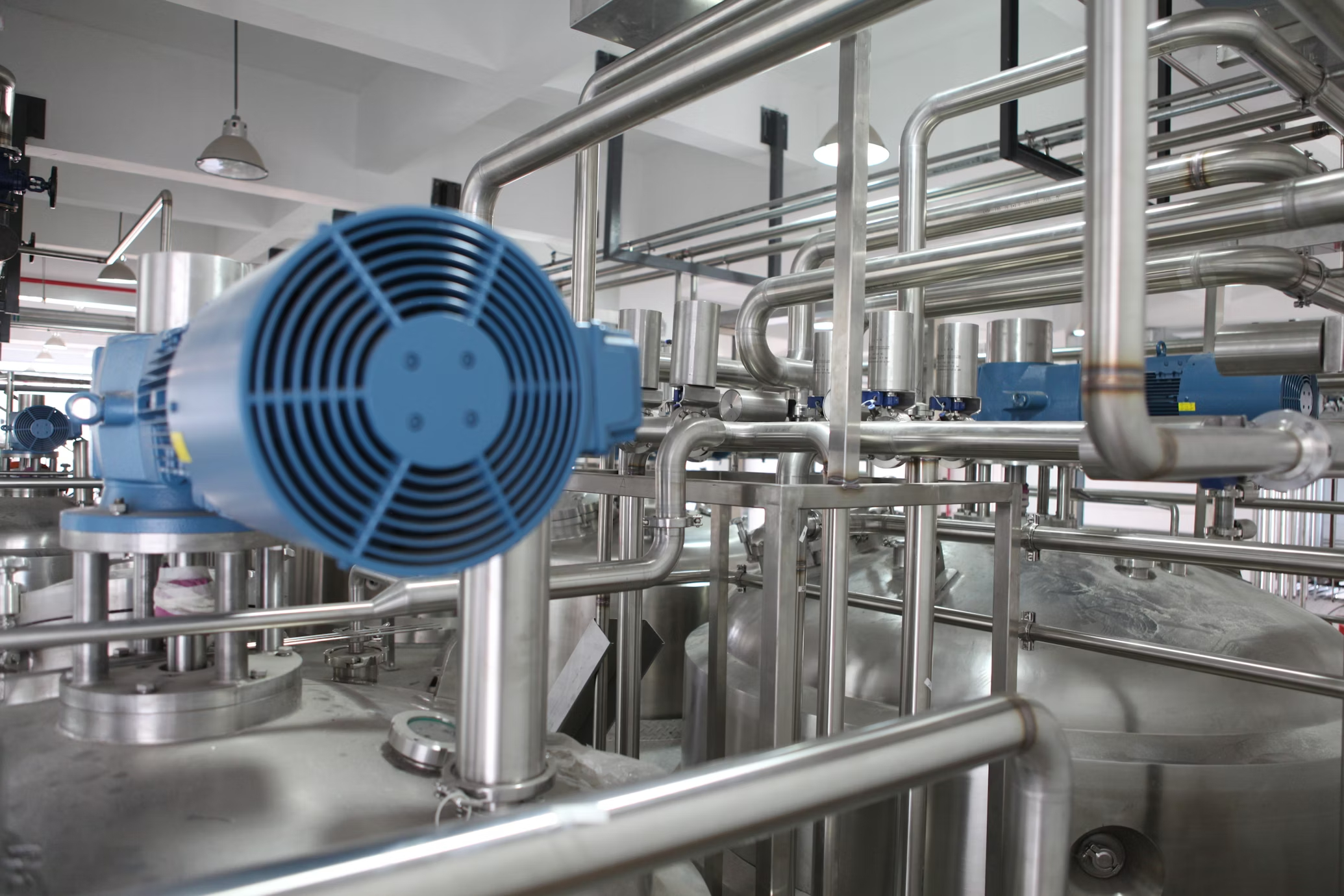With the extensive use of permanent magnet direct-drive motors in industrial automation, how to effectively suppress their vibration and noise has become an important issue of concern. Because of its special working principle and structural characteristics, the permanent magnet direct drive motor is prone to generating large vibration and noise, which affects the normal operation of the equipment.

Permanent magnet direct drive motors are very efficient and reliable, but a fair number of them suffer from vibration and noise issues. These issues normally arise from a few key areas, which include uneven electromagnetic fields, mechanical imbalances, bearing problems, and malfunctioning cooling systems.
Electromagnetic field inequality is one of the main reasons for generating noise and vibration in Permanent Magnet Direct Drive Motors. Since permanent magnet excitation is used, it could be the reason for an unbalanced magnetic field distribution. This leads to radial and tangential moment fluctuations while the motor is in operation.
For example, the variable magnetic field can cause the occurrence of oscillations within both the stator and rotor of the motor, which are usually referred to as vibrations. In real-time, this might come as periodic noises or vibration patterns whose periods depend on rotation speed. It was noted earlier that such oscillation creates very loud noise characterized by decibel and massive amplitude vibrations that reach up to the range of micrometers. This will probably require close regulation of the magnetic field distribution, perhaps through sophisticated algorithms within the motor control system to reduce these fluctuations.
The other important cause of vibration and noise in permanent magnet direct drive motors is mechanical imbalance. Usually, this occurs when there is an imbalance in the rotor. Even a minimal unbalance can generate periodic centrifugal forces due to motor rotation, which subsequently produces vibration and noise.
For the field tests executed on industrial motors, just a few gram masses of imbalance on the rotor may generate powerful vibration forces, which cause high noise levels, often even up to 70-80 dB; these would become very problematic, specifically if the stringency related to the operating area/ambiance is high. Thereby, very regular maintenance and precision balancing of the rotor are required. Advanced diagnostic tools can detect an imbalance long before operational consequences of the imbalance manifest themselves, thus allowing corrective actions to be taken in time.
The second most frequent cause of vibration and noise in permanent magnet direct drive motors is bearing defects. Bearing wear, looseness, or inadequate lubrication may result from long-time operation. All these defects may give rise to increased friction and uneven movement of the motor parts, thus resulting in vibration and noise.
A study about motor bearings showed that worn-out bearings increased noise levels by up to 15 dB. This noise is typically a rumbling or grinding noise, which may be picked up by vibration analysis tools. Badly lubricated bearings can also cause increased heat generation, thus aggravating the problem. To avoid these problems, regular maintenance schedules should be put in place to ensure that bearings are well-lubricated and replaced when needed.
The cooling system is important in the operational stability of a permanent magnet direct drive motor. However, problems with the cooling system can lead to temperature fluctuations inside the motor. Such temperature changes may cause thermal deformation and thermal stress, which will increase the vibration and noise.
If for some reason the cooling system functions improperly, then certain portions of the motor will tend to overheat, leading to expansion and contraction cycles that may cause misalignment or gaps in the structure and thus vibration. One study reported that up to a 30% increase in amplitude can be seen in vibration levels of motors due to thermal stresses caused by a malfunctioning cooling system. These vibrations were found to correlate directly with temperature spikes, highlighting the critical nature of a stable cooling system. Ensuring proper operation of the cooling system through regular checks and maintenance is essential to minimize these temperature-induced issues.
In summary, the various causes contributing to vibration and noise in permanent magnet direct drive motors include non-uniform electromagnetic fields, mechanical imbalances, defective bearings, and malfunctioning cooling systems. Advanced diagnostic tools and regular maintenance in combination are needed to conduct these modifications with precise engineering adjustments. Understanding and mitigating these causes will allow improvement in the performance and longevity of these motors for smoother and quieter operations.
The vibration and noise of a permanent magnet direct drive motor can be suppressed from the following aspects:
It can optimize the design and manufacturing process: In the course of design and manufacturing, it should pay attention to improving the uniformity of the magnetic field gap, reducing the size of the magnetic field gap, adopting precise processes, and carrying out appropriate material selection to ensure that the magnetic gap is reasonably designed and unnecessary vibration is not generated. Meanwhile, quality control should be enhanced, especially in the assembly process, to guarantee the balance of each component and minimize the effect of unbalance on the motor by using a dynamic balancer or precision machining process.
Electromagnetic design optimization: It may also be carried out through electrical design to minimize the magnitude of harmonics at the output of the motor or by adjustment of stator and rotor parameters for electromagnetic stiffness that is proper.
Mechanical balance calibration: Performing an accurate dynamic balance calibration on the motor’s rotor to make sure that it is in mechanical balance contributes to minimizing the occurrence of vibration and noise.
Selection of high-quality materials: When combined with regular inspection and maintenance, low-noise material selection can improve noise in permanent magnet motors.
Optimization of the cooling system: Reasonable design of the cooling system and installation to ensure stability in flow and temperature of the coolant and reduce thermal deformation and thermal stress caused by temperature difference to lower motor vibration and noise.
Damping technology: It adds the damping material or the damping structure such as the rubber vibration-isolating pad, the damper, etc. to the motor structure so that it can absorb the effective absorption and transform the vibration energy of the motor, further reducing the vibration and noise of the motor.
Active control technology: Use fuzzy control, neural network control, and other modern control technology to take active control measures on the motor so that it reduces the vibration and noise of the motor.
Acoustic cladding technology: The acoustic material lines up the surface of the motor, and it can effectively absorb and reflect sound waves. With this material, vibration and noise would be effectively reduced.
Regular Maintenance and Inspection: Permanent magnet motors are put under regular maintenance and inspection to promptly find and deal with problems. This keeps the motor in good operating condition, which may contribute to a reduction in noise and vibration.
Control of environmental factors that contribute to motor vibration and noise; for example, keeping the environment around the equipment clean and avoiding strong magnetic field interference. By controlling these environmental factors, it is possible to minimize the impacts on the operation of motors and reduce their vibration and noise.
Intelligent monitoring technology application: Implement intelligent monitoring technology, such as a vibration monitoring system or a sound analysis system, to monitor and analyze the real-time vibration and noise of the motor. With such technology, potential vibration and noise problems can be timely detected to provide strong support for preventive maintenance.
The above methods shall not be used in isolation but shall be considered and used in synergy for comprehensive use. In real life, owing to the types of motors, working conditions, and requirements for specific uses, some of these methods will have to be selected flexibly to reach the best effect of eliminating vibration and noise.

Conclusion
It is possible to effectively bring down the vibration and noise from the motor by incorporating comprehensive application, optimized electromagnetic design, mechanical balance calibration, high-quality bearings selected, optimization of the cooling system, and other measures. Regular maintenance and inspection should be performed, and the environmental factors affecting the motor vibration and noise should be controlled to keep the motor in good operating condition and reduce the generation of vibration and noise. In addition, it can make use of intelligent monitoring technology to monitor and analyze the vibration and noise. Timely detect potential problems and give an early warning, to provide strong support for preventive maintenance. The specific suppression methods of the permanent magnet direct-drive motor should be selected according to certain conditions in real operation for suppressing its vibration and noise.
As China’s leading permanent magnet motor provider, Enneng‘s TYDP Series Direct Drive and Gearless Motor find wide application in industrial production. The rotor process is reliable because a permanent magnet is used to provide a magnetic field. The size is flexible, and the design power ranges from dozens of watts up to megawatts. Meanwhile, with the increase or decrease of permanent magnets in the rotor, it is easier to change the number of poles of the motor so that the speed range of PMSM is comparatively wider.